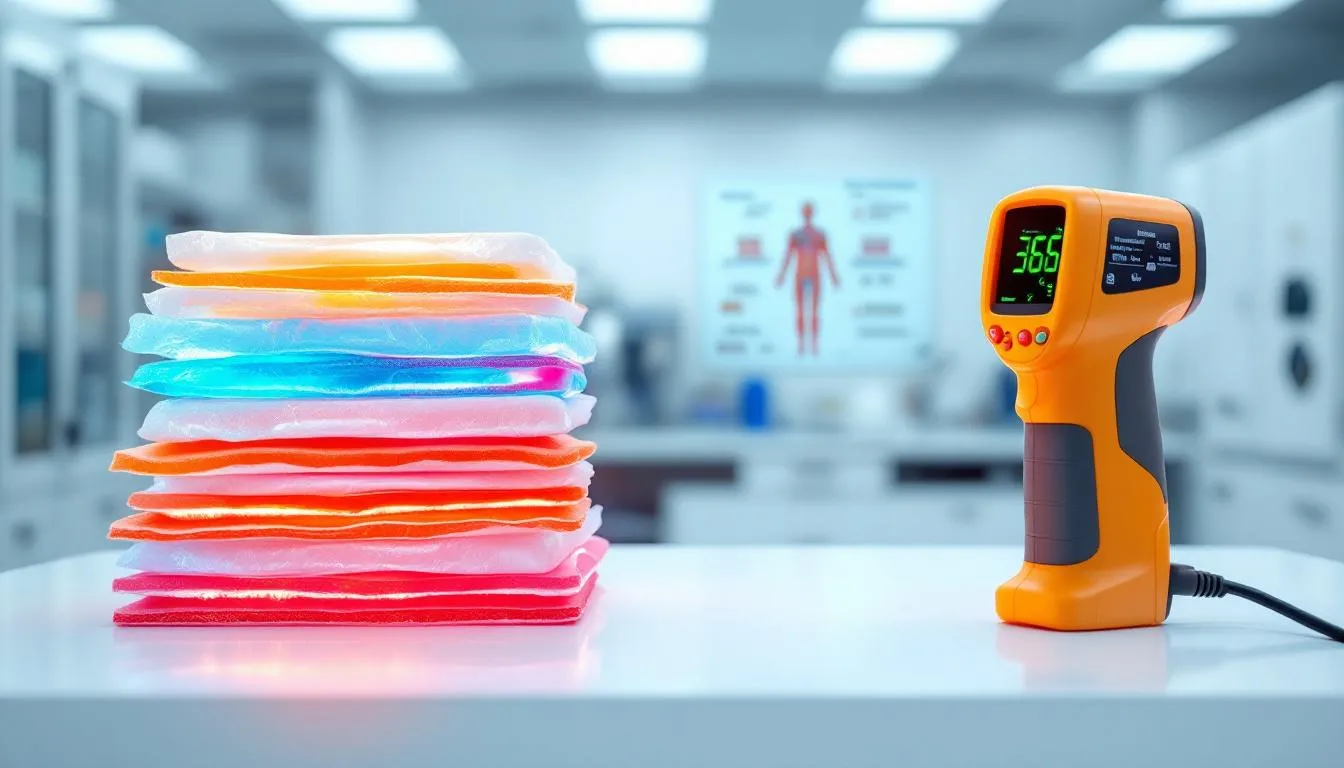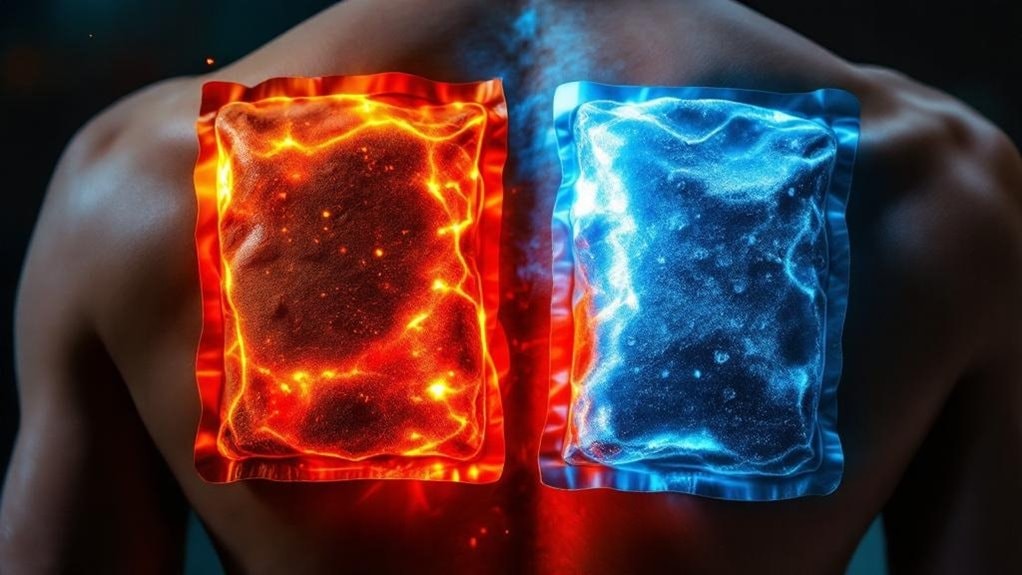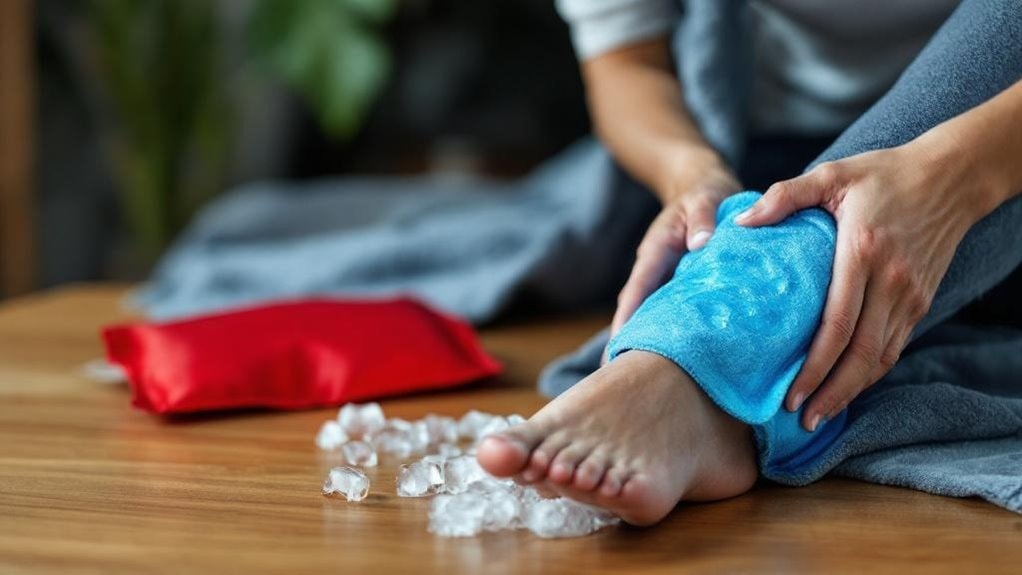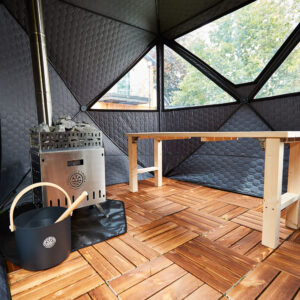
Ice Baths: A Key to Enhanced Recovery and Vitality for Athletes
Explore how ice baths can boost recovery and enhance vitality for athletes. Discover practical tips and insights to elevate your performance. Read more!
Spend Over £500 To Get Free UK Delivery - Excludes Certain Postcodes & Round Ice Baths
Delivery to Ireland now available

You might be sceptical about the effectiveness of something as simple as alternating heat and ice for pain relief. However, this approach combines the advantages of both heat and cold therapies, yielding impressive results. Imagine reducing inflammation and numbing pain with an ice pack, then using heat to encourage blood circulation and ease muscle tension – all from the comfort of your home. Curious about how this works and how to safely apply it? Let’s dive deeper and explore the science behind this natural pain relief technique.

While you may be familiar with the use of either heat or cold therapy for pain management, understanding how to use them together can greatly enhance their benefits.
Alternating hot and cold therapy can provide superior pain relief by addressing different aspects of the healing process. Cold therapy reduces inflammation and numbs the area, providing immediate relief for acute injuries. In contrast, heat therapy promotes blood flow and relaxes tight muscles, making it ideal for chronic pain and stiffness.
By alternating between the two, you’re able to combine these benefits, facilitating more effective pain management. This approach can help to reduce muscle soreness, enhance recovery, and ultimately, improve your quality of life.

Delving into the science behind cold therapy can help you understand how this method works to alleviate pain. Cold therapy, also known as cryotherapy, plays a significant role in pain management. Here’s how:
Understanding these principles can help you effectively use cold therapy for pain relief.

Having grasped the science behind cold therapy, you’re now ready to put that knowledge into action. When an injury strikes, promptly apply cold therapy.
Grab an ice pack, gel pack, or a bag of frozen peas, and place it on the injured area. This can effectively help in reducing inflammation and easing pain. Make sure the cold source is wrapped in a thin cloth to prevent direct skin contact and possible frostbite.
The key is to apply cold therapy for 15-20 minutes, then take a break for at least 1 hour before reapplying. This cycle can be repeated several times a day for the first 48-72 hours post-injury.
To maximise the benefits of cold therapy, it’s important to follow a few key recommendations.
Maximizing cold therapy benefits requires key steps: timely application, safe use, proper duration, and careful consideration of health conditions.

While cold therapy is great for acute injuries and reducing inflammation, it’s heat therapy that truly shines when it comes to relieving chronic pain and muscle stiffness.
The science behind heat therapy lies in its ability to increase blood flow to the affected area. This surge of blood brings much-needed oxygen and nutrients that aid in the healing process.
In addition, heat therapy can reduce muscle spasms, promoting a more relaxed state in your muscles. This relaxation helps to interrupt the pain signals being sent to your brain, providing relief from persistent discomfort.
Understanding the science behind heat therapy is only half the battle; applying this knowledge practically is where you’ll truly see the benefits.
Heat therapy, when used correctly, can effectively relieve pain and improve your quality of life.
To maximise its benefits, you can use various methods. Here’s a quick guide:
Before you begin using heat therapy, it’s crucial to follow some recommendations to guarantee safety and efficacy.
Always wrap heat sources like heat wraps in a cloth to prevent direct skin contact, reducing risk of burns.
Apply heat for 15-20 minutes to the affected area to relieve muscle pain. This should be enough time to stimulate blood flow, improving circulation without risking overheating.
You should also avoid using heat therapy on acute injuries or inflamed areas as it can exacerbate the condition.
Remember, heat therapy is best for chronic conditions, muscle stiffness, or pain.
Finally, never sleep with an electric heat source to avoid burns.
Stay safe while benefiting from heat therapy’s soothing effects.

If you’re seeking a method to maximise your pain relief, you should consider the power of contrast therapy. This technique leverages the benefits of alternating hot and cold therapy, enhancing your body’s natural healing process and offering effective relief from muscle soreness.
Contrast therapy works by:
Contrast therapy stimulates blood flow, minimizes inflammation, eases muscle tension, and improves joint mobility.
While contrast therapy offers numerous benefits, knowing how to apply it properly can greatly increase its effectiveness.
To make contrast therapy work, you’ll need to alternate between hot and cold therapy. Start with cold packs to reduce inflammation and soothe acute pain. Apply the cold pack to your affected area for about 20 minutes.
Next, switch to a heat wrap to enhance blood flow and relieve muscle stiffness. Keep the heat wrap on for another 20 minutes.
Repeat this process several times for maximum relief. Always remember to wrap the cold pack and heat wrap in a towel before applying to protect your skin.
With the right application, you can harness the power of alternating hot and cold therapy for effective pain relief.
When dealing with localised pain, hot and cold therapy can be applied directly to the affected area. These local applications offer targeted relief and can be easily incorporated into your daily routine.
Knowing when and how to use these therapies can make a significant difference in your pain management.
For those seeking full-body pain relief, immersion techniques provide an effective solution.
Imagine immersing your body in a tub filled with ice water. Yes, ice baths are a popular method, known for reducing inflammation and aiding in muscle recovery.
Alternatively, hot water baths are equally beneficial, primarily used to soothe stiff muscles and promote relaxation.
Now, combine these two approaches and you’ve got contrast therapy. This method, alternating between ice baths and hot water baths, optimizes the benefits of each.
It works by inducing a ‘pumping’ action in the blood vessels, enhancing circulation and expediting the healing process.
As you commence your journey of pain relief with hot and cold therapy, it’s essential to keep safety considerations at the forefront.
Incorrect usage may lead to skin burns or frostbite, undermining the benefits of this therapy. To prevent such occurrences, adhere to the proper guidelines.
While hot and cold therapy can be highly effective for pain relief, it’s crucial to understand that there are risks and contraindications associated with these treatments.
You shouldn’t apply heat therapy to an open wound, as it can increase the risk of infection and potentially worsen the condition. Similarly, cold therapy can aggravate symptoms of circulatory issues, making it unsuitable for individuals with such conditions.
Additionally, thermal therapies can cause burns or frostbite if improperly used. Always verify that the temperature is comfortable and safe, and never apply heat or cold directly to the skin.
To maximise the effectiveness of hot and cold therapy, it’s essential to adhere to certain best practices.
These strategies will help your therapy work most effectively:
You should apply ice or heat for about 15-20 minutes at a time. Remember to take a break in between to let your skin recover. Listen to your body and adjust as needed.
Yes, you can use hot and cold therapy for migraines or headaches. Cold compresses reduce swelling and numb pain, while heat relaxes tight muscles. Always remember to apply the therapy safely to avoid discomfort.
You’re spoiled for choice when it comes to brands for ice packs and heat wraps. Some top contenders include Chattanooga ColPac for cold therapy and Thermophore for heat. They’re absolute game-changers in managing pain effectively.
You can start contrast therapy within 24-48 hours after an injury. It’s essential, though, to initially use only cold therapy for the first 24 hours to reduce inflammation and swelling. Always listen to your body.
Absolutely, you can combine hot and cold therapy with other pain management techniques. This may enhance effectiveness, but always check with a healthcare professional before introducing new treatments into your pain relief regimen.
You’re now an expert in alternating ice and heat therapy. Just imagine yourself as a human ice cream sandwich, chilling out to reduce inflammation, then warming up for blood flow and relaxation. Just remember, no more than 20 minutes each, use a barrier, and don’t forget to check for contraindications. Now, go forth and conquer your pain with this scientifically-backed method. Isn’t it cool… and hot?

Founder of Urban Ice Tribe

Explore how ice baths can boost recovery and enhance vitality for athletes. Discover practical tips and insights to elevate your performance. Read more!

There’s nothing quite like the raw, elemental power of a pop-up sauna. Portable, authentic, and deeply restorative, it’s the perfect way to reconnect with nature and yourself. But to take your sauna ritual to the next level, the right sauna accessories can make all the difference.

Transform your outdoor space into a personal wellness retreat with the Urban Ice Tribe Sauna Tent. This detailed setup guide walks you through every step, from unboxing to your first steam session, blending practical instruction with the mindful ritual of heat therapy.
Helping men & women release anxieties & limiting beliefs to experience a life of freedom using powerful breathwork, cold water therapy, movement & sound healing.

No spam, notifications only about new products, updates, offers and announcements.